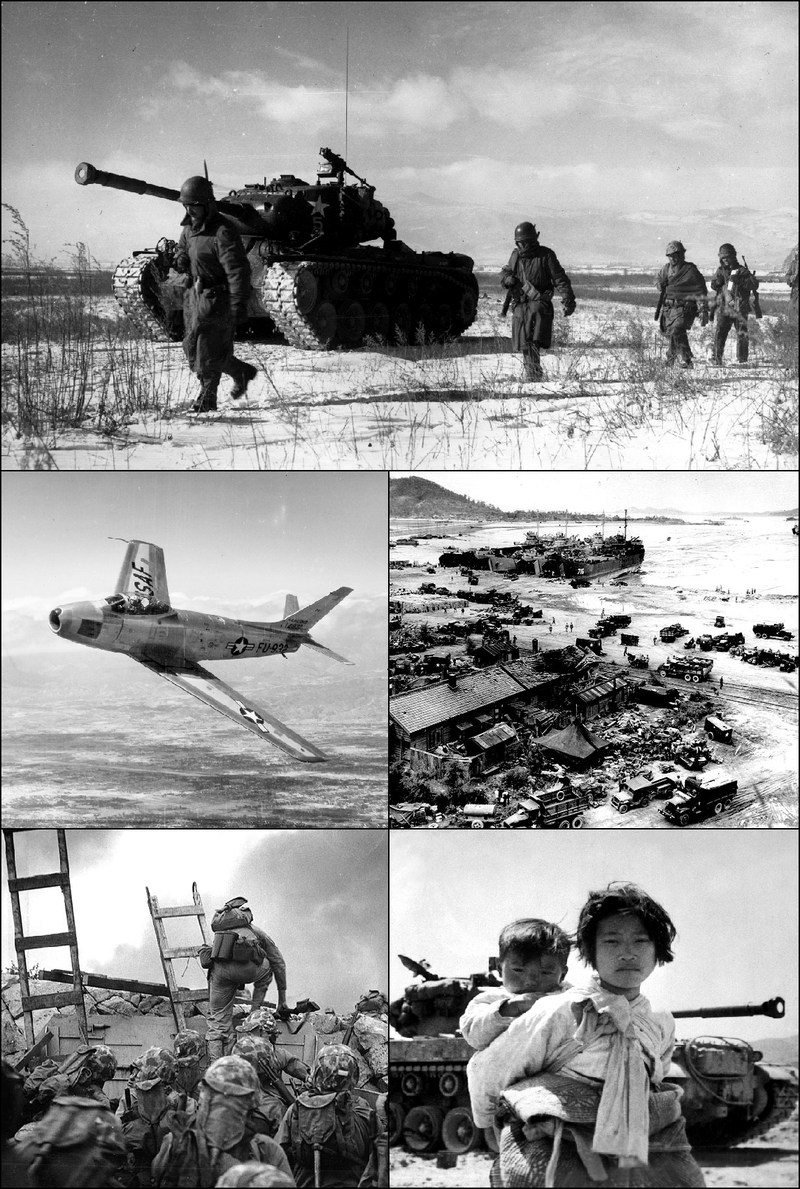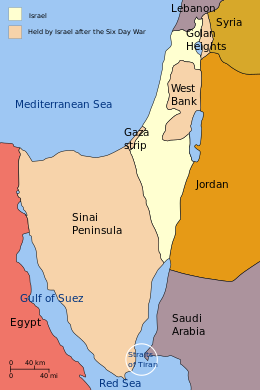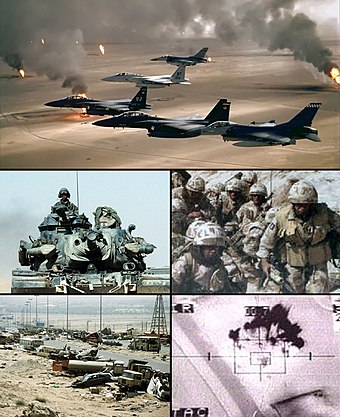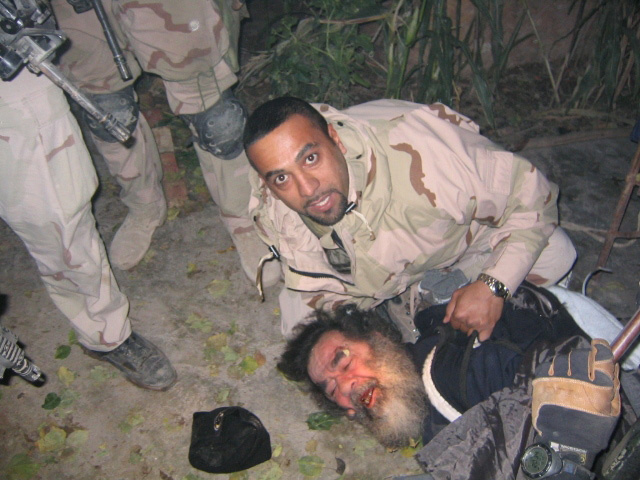Copyright 2016 by Gary L. Pullman
"To
be defeated is pardonable; to be surprised—never!”—Napoleon
Bonaparte
The
sneak attack—aggressors view it as a smart military maneuver, while
victims see it as an unsportsmanlike act of cowardice. It’s no
wonder, then, that a sneak attack is likely to result in a
declaration of war, followed by a full-blown conflict.
Despite
the strategic advantage an attacker achieves by a surprise strike,
provoking an enemy with a sneak attack does not always ensure victory
in the long run. Of the ten examples of war-inciting sneak attacks
listed below, an equal number of countries or groups who fell prey to
sneak attacks turned the tables on their attackers and won the
ensuing war.
10
Invasion of Plataea: Second Peloponnesian War (431 BC)
The
Second Peloponnesian War opened with Thebes' sneak attack on Plataea
in 431 BC.
According
to the Athenian historian and general Thucydides, Naucleides and his
fellow traitors within the gates of Plataea hoped to gain power for
themselves by assisting the city's enemies. They opened the city's
gates to Theban troops during the night. No Plataean guard had been
posted, as the attack had been prearranged with the approval of
Eurymachus, a citizen of great influence among the Plataeans.
Anticipating
war with Plataea, Thebes wanted to conduct a preliminary surprise attack, and this was the means chosen to accomplish this objective.
Once the Theban troops entered the city, they stacked their weapons
in the marketplace. They refused to kill whoever opposed Thebes'
control of their city, as Naucleides and his confederates had
intended. Instead, the invaders invited the Plataeans to join them
voluntarily, in allegiance to Thebes.
At
first, the Plataeans agreed, but, when they discovered they
outnumbered the invaders, they decided to overcome them, if possible.
To avoid being detected, they tunneled through common walls to
gather. They had placed wagons in the streets to form barricades. At
first light, the Plataeans rushed from their houses, attacking the
enemy. Surprised by the sneak attack, the Theban troops resisted,
driving their attackers back several times. However, the Plataeans
continued to press their attack, aided by women and slaves, who, from
inside their houses, “pelted them with stones and tiles.”
It
had rained throughout the night. The streets were muddy. The gate
through which the Theban soldiers entered had been shut and barred.
Many of the troops did not know any other way out of the city. The
early morning light was dim, “the darkness caused by the moon being
in her last quarter.” The Plataeans, familiar with their city and
its streets, were able to intercept them as they fled, the Thebans'
courage failing them.
Some
of the troops climbed the city's wall and jumped, often to their
deaths. One party found a “deserted gate” and broke it open with
an ax taken from a woman, but only a few escaped, having been spotted
by the Plataea's citizenry. Other bands of the enemy were 'cut off”
as they fled. A large body of the troops rushed into a building
adjacent to the city wall, mistaking it for access to a gate. As the
citizens debated as to the best course of action to take, some
suggesting the building be burned down around the invaders, Thebans
surrendered unconditionally. However, many others of them had been
killed.
In
all, the Theban troops numbered 300, under the command of Pythangelus and Diemporus, both Boeotarchs. A contingent had remained in Thebes,
as reinforcements. When news of their failed invasion reached them,
they marched at once to aid their comrades in arms. However, Thebes
was eight miles north of Plataea, the roads were thick with mud due
to the previous night's rain, and the Asopus river had risen and was
difficult to ford. By the time they reached their destination, the
Plataeans had killed or captured all of the advance force.
To
acquire hostages, the Theban reinforcements intended to kidnap local
shepherds and other workers in the fields nearby. Through a herald,
the Plataeans informed the Theban soldiers that, should they harm any
of their fellow citizens, they would kill their 108 captives.
According to the Thebans, if they withdrew from the area, the
Plataeans would release their prisoners unarmed. However, the
Plataeans insist that they agreed only to negotiate with the Thebans
if they withdrew, never promising to release their captives. Once the
Theban troops withdrew, the Plataeans gathered their men from the
countryside and then put their captives to death.
The
Theban troops' sneak attack on Plataea failed, but it ignited the
Second Peloponnesian War, as Plataea's ally, Athens, began
hostilities against the Peloponnesians, led by Sparta.
9
Attacks on Colonial Settlements: Second Anglo-Powhatan War (1622)
The
Second Anglo-Powhatan War lasted 10 years, from 1622-1632. The
belligerents were English colonists in Virginia and the 28 to 32
“Algonquian-speaking” tribes of “Indians of Tsenacomoco, who
were “often called the Powhatan Indians, in honor of their
paramount chief.” The Indians were “led by Opitchapam and his
brother (or close kinsman) Opechancanough.”
The
war started when “Opechancanough led a series of coordinated
surprise attacks that concentrated on settlements upriver from
Jamestown.” As a result of these lightning-swift strikes, “nearly
a third of the English population” was killed. The attacks having
come “as a complete shock” to the colonists, they were unable to
defend themselves and were soon overcome. In many cases, their
corpses were “mutilated.”
The
cause of these attacks was the encroachment of the colonists on
Indian territory as they moved “up the James River.” The Indians'attack was intended both to repel the colonists and to demonstrate
the Indians' “supremacy over the newcomers.”
The
colonists' ultimate victory was gained not through military might,
but by the destruction of the Indians' food supplies, the acres and
acres of corn they relied on for survival.
The
Indians made a tactical error in not pressing “their advantage,”
and the colonists mounted a prolonged and determined campaign against
their adversaries, “repeatedly” attacking “their food supply.”
The colonists calculated the Indians' food loss was enough to have
fed 4,000 individuals.
Agreeing
to a truce with the Indians so that both sides could plant their new
corn crops, the colonists toasted the agreement after providing the
Indians with poisoned wine. After killing them, the colonists scalped
some of the dead. When a full-scale battle in 1624 ended in
stalemate, the colonists destroyed more of their adversaries' crops,
repeating this tactic for five more years, until Virginia's “new
governor finally assigned an agreement” that ended the war.
8
Attacks on Acton Farms and Lower Sioux Agency: U. S.-Dakota War
(1862)
The
U. S.-Dakota War of 1862 “ended with hundreds dead. The Dakota people exiled from their homeland and the largest mass execution in
U. S, history: the hangings of 38 Dakota men in Mankato on Dec. 26,
1862.” It, too, began with a sneak attack.
Treaties
between the U. S. government and the Dakota nation called for the
Dakotas to cede land to the United States in return for annuities and
funds for “trade shops (such as blacksmiths), . . . agricultural
tools and supplies” and the payment of “debts claimed by
traders.” However, the Dakotas claim that these alleged debts were
false or “inflated” and objected “to the traders being paid
directly by the U. S. government,” The situation created bad blood
between the United States and the Dakotas, as did the government's
attempt to force the Dakotas to “acculturate,” rather than retain
their own way of life.
Times
were hard, and, when annuities were not paid on time, some traders
and Indian Agency employees refused to extend credit to the Dakotas.
These broken promises and this ill treatment precipitated the war,
when Taoyateduta led a band of Dakotas in an attack on the Lower
Sioux Agency, killing many civilians, following an attack, the
previous day, in which “four Dakota men killed five people” on
two farms in Acton. The Dakotas followed the sneak attack with
assaults on other towns and army posts. The resulting “war lasted
six weeks” and cost the lives of more than 600 civilians and U.S.
soldiers, as well as an estimated 75-100 Dakota, who lost their
lives.”
Even
after the war, “intermittent fighting” continued between the
Dakota Indians and the United States throughout the 1880s, until it
culminated in the Battle of Wounded Knee, on December 29, 1890.
7
Attack on Port Arthur: Russo-Japanese War (1904)
Japan
had decided to attack.
It
had steadily built up its army, over the 10 years since its 1894 war
with China, and, now, as a result, it enjoyed a “marked
superiority” over its former adversary. Russia might occupy
southern Manchuria's Liaotung Peninsula, and it might have “extended
the Trans-Siberian Railroad across Chinese-held Manchuria,” but
China was vulnerable. It still lacked the assets needed supply “its
limited armed forces in Manchuria.” Russia's refusal to withdraw
troops from Manchuria, as it had agreed to do, gave Japan the excuse
it needed.
On
February 8, 1094, Japan's main fleet “launched a surprise attack
and siege on the Russian naval squadron at Port Arthur.” A month
later, Japanese troops “overran” Korea. Two months after this,
Japan landed another army on the Liaotung Peninsula, cutting Port
Arthur off “from the main body of Russian forces in Manchuria.”
Russian troops retreated before an advance of Japanese soldiers, and
Russia's subsequent attempt to take the offensive proved
“indecisive.”
In
1905, Port Arthur's commander surrendered, and the Russians lost the
war's final land battle at Mukden. The Japanese victory in the
maritime Battle of Tsushima was a turning point, and their victory
over Russia's Baltic Fleet in the Battle of Tsushima Strait that
followed brought Russia to its knees. Japan had won the war, thanks,
in part, to its sneak attack on Port Arthur.
6
Attack on Royal Irish Constabulary: Irish War of Independence (1919)
“The
only way to start a war was to kill someone, and we wanted to start a
war.”
So
said Dan Breen, a member of The Irish Republican Army (IRA), who took
part in the 1919 sneak attack that left two members of the Royal
Irish Constabulary dead—and started the Irish War of Independence.
The
mood was right, in Ireland, at this time, for independence from
Britain. Leaders of the Easter Rising, or Easter Rebellion, had been
executed. Sínn Féin had a “won 70% of the total Irish seats in
the 1981 General Election.” Refusing to recognize the authority of
the British Parliament, they established their own government body,
the Dáil Éireann (Assembly of Ireland), in Dublin, “to govern Ireland from Ireland.”
To
start the war of independence they longed for, “IRA members in
Tipperary ambushed and killed two unarmed members of the Royal Irish
Constabulary.” They got what they wanted, as Britain moved to put
down the rebellion.
Against
the wishes of his fellow Sínn Féin colleagues, commander MichaelCollins ordered the IRA to conduct guerrilla warfare tactics, using
sneak attacks to surprise “small groups of British troops” with
“quick ambush attacks” so their victims would not have the
opportunity to defend themselves.
Britain
responded by organizing two groups, the Black and Tans (so called
because of the colors of their uniforms) and the Cairo Gang. The
former, consisted of conscripted World War I veterans, whose mission
was to “keep order in Ireland.” The former, made up of “former
secret agents and spies,” were assigned the tasks of taking “down
the IRA networks in Ireland.”
Using
“informers within the British forces” and a “squad” of secret
assassins, Collins ordered the executions of high-ranking British
officials and secret agents. The worst incident of the war, Bloody
Sunday, occurred on November 21, 1920, when the IRA dispatched
multiple operatives “to several addresses in Dublin to assassinate
members of the Cairo Gang . . . . killing fourteen of them and one
member of the Black and Tans.”
The same day, the Royal Irish
Constabulary and the Black and Tans “opened fire on a crowd at a
Gaelic football match at Croke Park, killing 14 members of the
public, including a woman and a child, and injuring dozens more.”
The
violence was not yet over. The same evening, “three imprisoned IRA
members were tortured and killed at Dublin Castle after allegedly
trying to escape.”
Terroristattacks on police and the public alike resulted in 1,000 deaths
within six months (January 1921 through July 1921).
The
war ended when Collins, accompanied by IRA negotiator Arthur
Griffiths, signed a treaty with British officials, agreeing to end
the conflict in exchange for Ireland's independence as “a dominion
of the British Empire.” Many IRA members did not accept the terms
of the treaty, however, and a civil war ensued.
5
Attack on Pearl Harbor: World War II (1941)
The
very idea that the 1941 Japanese assault on Pearl Harbor, Hawaii, was
a sneak attack is controversial. Many believe that the so-called
secrecy of the attack was due to nothing more than “fateful
accidents and plain bumbling that delayed the delivery of a document
to Washington hinting at war.”
Indeed,
some conspirators go so far as to insist that U. S. president
Franklin Delano Roosevelt knew full well of the Japanese plans, in
advance of the attack, but intentionally sat idly by, allowing the
Pearl Harbor attack to occur, as an excuse for the United States to
declare war on Japan and enter World War II.
Historians
and government officials typically contend that communications
problems and
diplomatic red tape prevented the United States from knowing about
Japan's war plans: “Textbookshave
dwelt on the problems of transmission and translation of the
so-called Final Memorandum, on Dec. 7, 1941—the day Pearl Harbor
was attacked,” and other “accounts have focused on the slowness
of the Japanese Embassy in Washington to produce a cable of the
memorandum from Tokyo, and on delays caused by security rules
prohibiting the embassy's American secretary from typing the
document.”
However,
relatively recently discovered “diplomatic papers” seem to show,
quite clearly, a “picture . . . of a breathtakingly cunning deceit
by Tokyo aimed at avoiding any hint to the Roosevelt administration
of Japan's hostile intentions.” Furthermore, according to Takeo Iguchi, “the researcher who discovered the papers in the Foreign
Ministry archives, the draft memorandum, together with the wartime
diary of Japan's general staff,” indicate “a vigorous debate
inside the [Japanese] government over how, indeed whether, to notify
Washington of Japan's intention to break off negotiations and start a
war.” Meanwhile, as Japanese military commanders debated the issue,
their government's “diplomats in Washington [were] deliberately
kept in the dark by their capital,” while they met “with their
American counterparts.”
''The
diary shows that the [Japanese] army and navy did not want to give
any proper declaration of war, or indeed prior notice even of the
termination of negotiations,'' says Iguchi. ''And they clearly
prevailed.'' Iguchi says, further, that “the general staff,
together with a pliant Foreign Ministry, had controlled not only the
content of the message to Washington, but also its timing,” so that
the message was not to be “delivered to the State Department”
until “1 p.m. Washington time on Dec. 7.” Secretary of State
Cordell Hull did not receive the message until “about 2:20 p.m.,
approximately one hour after the sinking of the American Pacific
Fleet at Pearl Harbor.” The
famous delay in delivering the message, he said, was probably the
result of deliberate planning,” The
New York Times
declares.
The
sinking of the American navy fleet at Pearl harbor seems, clearly, to
have been the result not of a plan known in advance by President
Roosevelt or any other U. S. official, civilian or military, but a
deliberate sneak attack. From the perspective of the U. S., it
started a war which, four years later, Japan and its allies, the Axis
Powrs, lost.
4
Invasion of South Korea: Korean War (1950)
Although,
in general, the events of the Korean War are familiar to most, many
are unaware that it began with a sneak attack.
The
circle of latitude 38 degrees north of the equator (known as the
“38thparallel”) marked the border between North Korea and South Korea,
so, when the North
Korean People's Army (NKPA)
,
without provocation, crossed this line on June
25, 1950,
they invaded their southern neighbor. This incident started the
Korean War.
“Eight
divisions and an armored brigade (90,000 soldiers) . . . attacked in
three columns,” catching the Republic of Korea (ROK) off guard. The
ROK's 98,000-man army's training was “incomplete,” and, with “no
tanks and only 89 howitzers” at its command, South Korea's military
forces were “no match for the better-equipped,” battle-hardened
NKPA. The ROKA was “overwhelmed” and retreated “south in
disarray,” leaving Seoul vulnerable to the invaders, who captured
South Korea's capital city.
President
Harry S. Truman authorized General Douglas MacArthur to “use all
forces available to him” to protect Pusan. After securing Pusan,
MacArthur landed troops at Inchon, perceiving that the NKPA became
“more vulnerable to an amphibious envelopment” the farther south
they invaded. MacArthur liberated Seoul after “street-to-street
fighting,” returning it to South Korean control. Truman ordered
MacArthur to invade North Korea, taking the fight to the enemy.
Chinese Communist Forces (CCF) entered the war in support of North
Korea.
The
war became, more and more, a stalemate, and “armistice negotiations
began on July 10, 1951, at Kaesong.” Although CCF intensified its
attacks during peace negotiations, the armistice was signed on July
27, 1953, and all hostilities ceased. More than 33,600 American
military personnel were killed in the war, and over 103,000 were
wounded. Enemy forces suffered 1,500,000 casualties, prisoners
included, among whom 900,000 were Chinese.
The
greatest war, so far in the history of the world that had begun with
a sneak attack, was finally over. It ended ambiguously, with neither
opponent a clear victor.
3
Attack on Egypt: Six-Day War (1967)
One
of the world's shortest wars also began with a sneak attack.
On
May 22, 1967, Egypt blockaded the Straits of Tiran, preventing ships
from sailing to or from Israel's southernmost port at Eilat. As a
result, Israeli's single “supply route with Asia” was cut off, as
was “the flow of oil from” Israel's “main supplier, Iran.”
Although
the United Nations, the United States, and other countries supported
Israeli's “right of access to the Straits of Tiran,” and the
United States tried to negotiate with Egypt, Egypt signed a “defense
pact” with Jordan, and Egyptian president Gamal Abdel Nasser stated
that “the armies of Egypt, Jordan, Syria and Lebanon are poised on
the borders of Israel . . . to face the challenge, while standing
behind us are the armies of Iraq, Algeria, Kuwait, Sudan and the
whole Arab nation.” The “Arabs,” he declared, were “arranged
for battle.” Iraq's president, Abdur Rahman Aref, also voiced his
nation's support of Egypt and its allies, calling for the eradication
of Israel: “The existence of Israel is an error which must be
rectified,” he said. “This is our opportunity to wipe out the
ignominy which has been with us since 1948. Our goal is clear—to
wipe Israel off the map.”
Surrounded
by hostile nations apparently bent on his Israeli's destruction and
aware that his nation's military forces could not remain “fully
mobilized indefinitely,” as they had been for three weeks, and
refusing to “allow its sea lane through the Gulf of Aqaba to be
interdicted,” Israel decided to launch a sneak attack on its
adversaries.
The
United States refused to become involved, declaring itself “neutral
in thought, word and deed,” and “imposed an arms embargo on the
region,” as did France, while the Soviets supplied “arms to the
Arabs” and “the armies of Kuwait, Algeria, Saudi Arabia and Iraq
were contributing troops and arms to the Egyptian, Syrian and
Jordanian fronts.” Isolated, Israel launched a massive sneak
attack, dispatching all but a dozen of its Air Force fighters.
(Twelve remained behind to guard “Israeli airspace.”)
The
plan was to attack “while the Egyptian pilots were eating
breakfast.” As a result of this surprise assault, 300 Egyptian
aircraft were destroyed within two hours, and “by the end of the
first day, nearly the entire Egyptian and Jordanian air forces, and
half the Syrians’, had been destroyed on the ground.” The air
assaults were followed by ground battles in which Israeli and
Egyptian tanks fought it out “in the blast-furnace conditions of
the Sinai desert.”
When
Israeli fighters returning to Israeli after destroying Egyptian air
force assets on the ground were suspected of launching an attack
against Jordan, King Hussein ordered the bombardment of Jerusalem,
causing an exodus of Palestinian refugees into Jordan from the West
Bank. Having defused the threat to its existence and seeking to avoid
a confrontation with the Soviets, who had threatened to intervene on
behalf of Israel's opponents, Israeli accepted a cease-fire on June
10. Casualties on both sides were high, as was the loss of military
assets, but Israel had survived and had tripled the size of its
territory, and a military administration was established, rather than
Israel's annexing the West Bank.
2
Invasion of Kuwait: Gulf War (1990)
In
a sneak attack, Iraqi president Saddam Hussein ordered “an army of
more than 100,000 soldiers and 700 tanks to cross the Iraqi border
into Kuwait at 1 a.m. on August 2, 1990.” Aided by air and sea
support, these forces approached Kuwait City “from two directions.”
Two days after this surprise attack, Kuwait was overwhelmed, and the
Iraqi occupation began. When the international community condemned
the invasion, Hussein warned that he would make a “graveyard” of
Kuwait if any other nations intervened on its behalf. Six days later, he announced his intention of annexing Kuwait as
Iraq's “19th
province.”
When
Hussein ignored calls for him to withdraw from Kuwait, U. S.
president George Bush “issued an “ultimatum on August 28.” If
Iraqi forces did not “withdraw within 48 hours,” war would be
declared. Hussein ignored the warning, and Iraqi forces began to
prepare fortifications and barriers “along the coast and Saudi
border.” Hussein also threatened to destroy Kuwait's oil wells and
other infrastructure.
Operation
Desert Shield began on August 7 and lasted until January 16, 1991,
when Operation Desert Storm commenced. The latter lasted for six
weeks and involved massive air attacks by Stealth fighters and other
aircraft firing stand-off missiles. ( (A guided missile has
“stand-off capability” if it can be fired from an aircraft at a
great enough distance from its target to be out the range of enemy
defenses.) The U. S. sneak attack on Iraqi air defenses removed the enemy's air
defense capability, helping ground forces move aggressively, without
fear of being attacked from the air by Iraqi warplanes.
Hussein
lived up to his threat to destroy Kuwait's oil wells and “pumped
oil into the Gulf.” Within a month, “hundreds of oil wells were
ablaze and 1.5 million barrels per day of oil were pouring into the
Gulf.” Hussein also attempted, unsuccessfully, to invade Khafji, a
Saudi Arabian town.
After
Hussein defied another ultimatum to withdraw from Kuwait, a ground
war, Operation Desert Sabre, commenced. Coalition forces entered
Kuwait from the south and dispersed throughout the country. Iraqi
forces sought to abduct Kuwaiti citizens and continued to lay waste
to the oil fields and to buildings and other structures they'd
“pre-wired with explosives.” A Kuwaiti resistance group
“barricaded themselves in a house in Kuwait City's Al-Qurain
district and battled” Iraqi tanks but were defeated after 10
hours. On February 26, Hussein ordered his troops to withdraw. Two
days later, “coalition forces, led by Kuwaiti soldiers, entered the
ruins of Kuwait City,” and the war was over. On March 15, the
exiled emir returned to Kuwait to resume governing the nation.
1
Attacks on The World Trade Center, the Pentagon, and Flight 93: War
on Terror
Various
conspiracy theories seek to account for the terrorist attacks that
took place in the United States on September 11, 2001. Although there
are quite a few such theories, some of the more common ones are that
“someone . . . other than Al Qaeda orchestrated the events of 911,”
that “the Twin Towers collapsed because of a controlled substance,”
that “a missile, not a plane, hit the Pentagon,” and that Flight
93 was shot down by a missile over Pennsylvania.”
The
truth of the matter is that 19 Al Qaeda terrorists from Middle
Eastern nations conducted secret attacks on three locations: the
World Trade Center, in New York City, New York; the Pentagon, in
Arlington, Virginia; and a commercial aircraft, which crashed in
Shanksville, Pennsylvania. The airliner had been hijacked by
terrorists and is believed to have been en route to Washington, D.
C., where it would be used to destroy the White House or the Capitol
Building.
These
sneak attacks against unarmed civilians resulted in the U. S.
invasion of Afghanistan, in 2001, and ignited the Iraq War, which
began in 2003. Intelligence reports indicated that the Taliban, a
terrorist organization running the government in Afghanistan, “was
protecting Al Qaeda's leader [Osama] Bin Ladin and allowing Al Qaeda
to run training camps in the country.” Intelligence reports also suggested that Iraq was concealing weaponsof mass destruction to which terrorists might receive access.
(Contrary to these reports, no such weapons were found.)
As
a result of the invasion of Afghanistan, the Taliban were deposed,
and many Al Qaeda operatives have been captured or killed. Bin Laden
himself was killed in Pakistan in 2011 by U. S. military forces.
Hussein
was also captured. He was later put to death by an Iraqi court.
Despite
the military efforts of the coalition forces, the War on Terror
continues.















.jpg/424px-World_Trade_Center%2C_New_York_City_-_aerial_view_(March_2001).jpg)


No comments:
Post a Comment